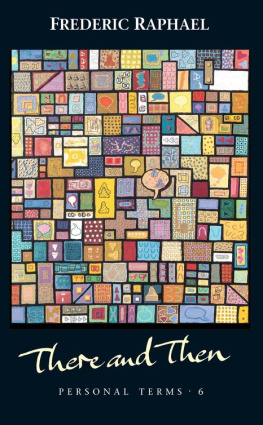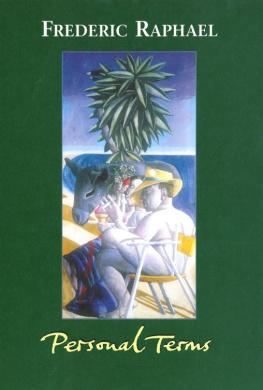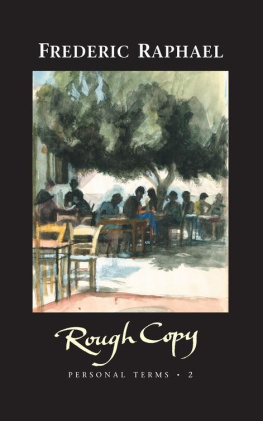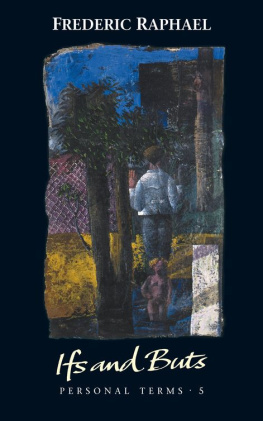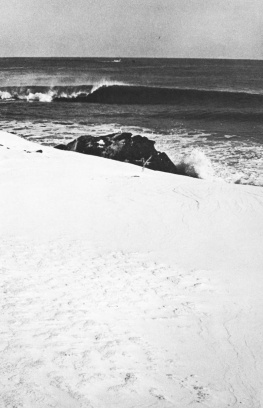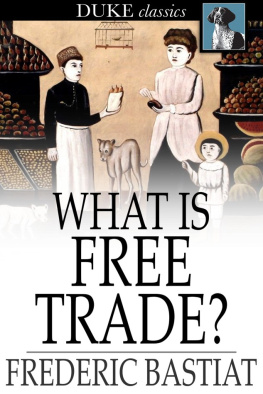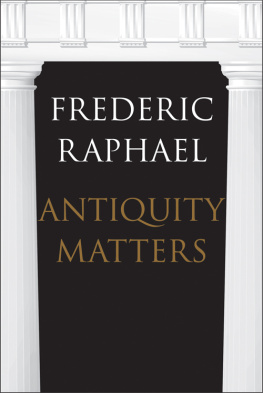In his diaries of the entre-deux-guerres, Evelyn Waugh reports just one remark made by my namesake, Enid Raphael: I dont know why they call them private parts, mine arent private. Who was she? What became of her? Who knows? How wise she was, possibly, never to say anything else! As prolific as a writer may be, few of his remarks are likely to survive the winnowing of time. A man or woman may compile a ponderous oeuvre and yet remain, so to say, out of cite. This does not entail that none of their works are worthy of posteritys attention: Remarks are not literature, said Gertrude Stein. Indeed; but who can quote (or enjoy) anything much that she wrote, apart from a rose is a rose is a rose? She did also say of Oakland, California, where she lived as a young girl (and went to Hebrew classes), that theres no there there. These tautologous triplets might as well have been her only progeny. Yet her fat aura still sits, as irrevocably sedentary as Whistlers mother, in todays Paris; the mature, just slightly rancid, eidolon of Daisy Miller, the American girl who never went home again.
Enid Raphaels shameless observation was an augury of what has come to pass. With the advent of the internet, and its derivatives, what is now private? There is no veil of modesty between the electronic flasher and publication, whether of erotic images, confessional boasts, wild opinions or asterisked obscenities. The new media truncate language and turn clichs into cute, sometimes cryptic acronyms. Speed being of the essence, any attempt to be original, or even considered, is anachronistic. The response goes before we have time, or inclination, for second thoughts. How many e-mails are read through by the sender? Misprints, omissions and solecisms fly away unchecked. No wonder flout and flaunt are, according to the latest dictionaries, accepted alternatives.
Todays reader of e/pistles misses the surge of anticipation which used to accompany the arrival of the post. The individuality of the handwriting on an envelope, and the thickness of its contents, promised, when they did, a proper letter. Once a letter was opened, hurriedly or with delicious care, the nuances of stationery presaged its quality. Nothing one wanted to read could be written on lined paper. Green ink warned of monomania. The slope of a correspondents script, his ability to avoid the slouch of the lines on the page, the use of exclamation marks or underlining, whether or not the pages were numbered, the paragraphing, even the charge of ink on the pen, the blots, the corrections, all such things were silent witnesses which alerted the reader to the character and merit of the sender. Even the way in which the date was inscribed (whether the month was announced in numerals or abbreviated or set out in full) told us something of the letters provenance and pretensions.
Part of what was valuable in correspondence was its privacy. The opening of the envelope promised, if you were lucky, something which might confirm what Robert Graves called the meum-tuum sense. To read other peoples mail was a breach of decency. A US Secretary of State forbade the secret service to steam open the mail of the German and Japanese embassies on the grounds that gentlemen dont read other peoples letters. Alec Douglas-Home, I am promised, had the same wincing attitude when, in the early 1970s, MI5 disclosed how they had come on the evidence of widespread Soviet spying in Great Britain.
Somerset Maugham wrote a short story (not The Letter) in which a lonely planter, in Malaya, is so jealous of the many letters which his colleague receives that he buys one of them from him, unopened. The addressee presumes that once it has been read, the letter will later be handed to him for second-hand perusal. When its purchaser insists on keeping it to himself, it is the original recipients turn to be murderously jealous. Only Dorothy Parker had the brazenness to claim that, never mind the personality of the sender, the most acceptable letter was one containing the words, Cheque enclosed.
How many handwritten envelopes does anyone now see on the mat? The chances are that, even if there is one, the enclosure will be mechanically rendered. As for books, whose today are not composed directly on a PC? One freezing Boxing Day, more than forty years ago, my daughter Sarah and I went to visit the poet George MacBeth. He was living in a large rectory in Norfolk with Lisa St Aubin de Tran, whose portrait he wanted Sarah to paint. The damp and cracked walls of their unheated living room were hung with old typewriters. In the 1970s, it seemed idiosyncratic. Most writers today have, whether literally or metaphorically, hung up their typewriters. The last one to be manufactured was produced in 2012.
There was a time when American universities bought up the manuscripts of ranking writers, for flattering fees. Even the least of their obiter scripta were solicited and stored. In the 1980s, it was said to be no very rare sight to come across some solicited celebrity copying out the text of his old novels into an exercise book in order to supply the original manuscripts, convincingly tortured with corrections, and flying balloons with Proustian second thoughts. Did the cleverest of such fabricators amuse themselves by interposing new variant phrases, nicely crossed out, or even heavily obscured, so that PhD students might later have the excited pleasure of decrypting them? In contemporary cases, if we seek an original text, we are likely to find that there is no there there.
Last summer, at what was billed as an academic conference, I gave a misconceived lecture. The overall subject of our symposiastic attentions was Biography. When invited, I took it that we were to consider the topic sub specie aeternitatis: what would a true biography be and how could a writer best approximate to it? My unaggressive case was that there were lacunae, even in the best documented lives, which could be filled, or bridged, only by an imaginative reading of what we knew in order to divine what tact or indifference had left unrecorded. No archive, however ample, embraces the quick (or the dark) of a subjects life. I made a case for something like the intuitive, perhaps sly, precision which a picture-restorer brings to her work. In writing, the choice of tone and vocabulary, even when rehearsing facts, supplies a way of indicating how, in human lives, similar causes have different effects.
I took it that the crisis in biography was to do with how literary portraiture might survive in a world of instant Facebookish facsimiles, soundbites and journalistic opportunism. If I was a little fancy, I assumed that was what was expected in the circumstances. It was not. The next speaker, a pale editor from one of the most influential London publishers, was not concerned with truthful depiction or nuance. His notion of a crisis was identical with that of the Chancellor of the Exchequer: a fall in revenue from the mercantile category under review. The suited delegate from the gratin of English publishing was no more than a sales manager in sententious drag. On his pragmatic calculus, profit-and-loss was the only aesthetic. He enlightened us about his anxieties by projecting a flow-chart on the lecture-room wall. It demonstrated perhaps a 0.7 per cent dip in the public appetite for his brand of canned goods. What was worth writing, we were led to suppose, was identical with what the writing was worth to him, Maecenas on the make.
During the lunch break, as we lined up for economic sandwiches and cellophaned salads, the important editor asked me, with demanding deference, whether I would let him have a copy of my lecture; he would like to post it on his companys website. Having spent a full week composing a paper which I hoped would be erudite enough for the occasion, I saw neither honour nor advantage in supplying free pabulum to a man who had just declared that a sales chart proved how good a book was. Why, I said, offering him the dirty end of his own

